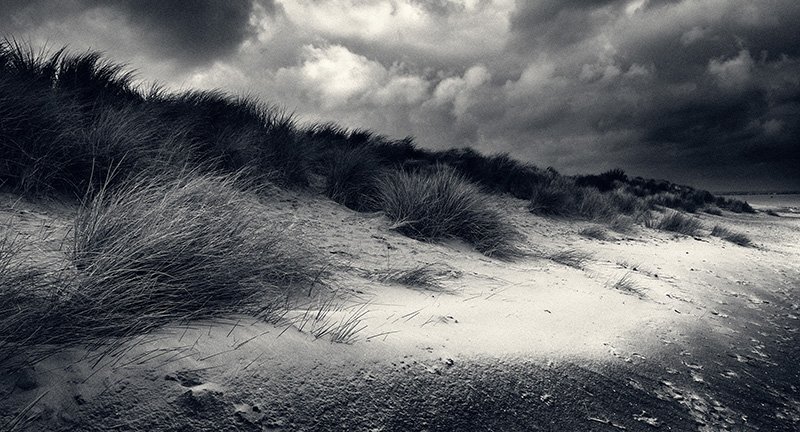Is sensor size important?
When it comes to the sensors inside digital cameras we often get told that ‘bigger is better’, to the point that many of accept it without a second thought. But is this always the case, or is there more to consider than the size of a sensor?
Post author: Chris Gatcum
Need MORE help with the basics?
Emma’s beginner’s photography class is free by email (there’s a small charge to buy the app community). Join here and get started today:
Pixels
To start our exploration of sensor size, we need to focus in on the basic building block of a digital image: the pixel. In the simplest sense, when a camera makes an exposure, the shutter opens and photons of light pass through the lens. These photons reach the camera’s sensor where they are collected by photosites, which can be thought of as microscopic light-gathering ‘buckets’. Thanks to a whole load of technological wizardry, the photons gathered by an individual photosite are converted into a single pixel, and these pixels are combined to create your photograph.
Every pixel in a digital photograph is generated by its own photosite, which consists of a light-sensitive photodiode topped with a red, green or blue colour filter (to generate a colour image) and a microlens (to direct the light).
Now, there are two things that are worth noting here:
Every pixel in a digital photograph is generated by its own photosite. This means that a 16-megapixel (million pixel) camera needs to have 16 million photosites, a camera with a 24-megapixel resolution has 24 million photosites on its sensor, and so on.
Every light-gathering photosite takes up physical space on the sensor.
This sets up a simple trade-off between the number of pixels and the size of the photosites creating them. If you want to fit more photosites (pixels) on a sensor of a certain size, they need to be smaller, so the photosites on a 24 megapixel full-frame camera would be smaller than those on a 16 megapixel full-frame camera, for example
By the same token, if you had a full-frame camera and a Micro Four Thirds camera and they both had the same resolution – let’s say, 16 million pixels – the photosites on the Micro Four Thirds sensor would have to be smaller, as the same number of photosites are being squeezed into a much smaller area (36x24mm in the case of the full-frame camera and 17x13mm for the Micro Four Thirds sensor).
The simple rule of digital camera sensor sizes is the bigger the sensor, the more pixels you can fit on it and/or the larger those pixels can be.
Why size matters
Remarkably, even though there are millions of photosites on a sensor, their size can be measured physically. The unit of measurement used for this is ‘microns’, with one micron equal to one thousandth of a millimetre, (0.001mm). This measurement is referred to as ‘pixel pitch’, which is the size of a single photosite. As pixel pitch is entirely independent of the size of the sensor, it provides us with a direct comparison between the size of the photosites in different cameras and across different formats. But why does this matter?
To explain this, let’s go back to the idea that photosites are light-gathering buckets, and let’s imagine that the photons of light passing through the lens when you make an exposure are a bit like rain. If you put a small bucket out in a rain shower then it will almost certainly catch some water. However, put a large bucket out in the same rain shower and it will not only catch more raindrops in any given period, but it will also be able to hold more water overall.
Gathering light on a camera’s sensor is analogous to collecting rainwater in buckets: the bigger the bucket, the more raindrops you will catch and the more water you can collect.
The exact same thing happens with photosites and light. Larger photosites can gather more photons of light during an exposure, and the more light a photosite can gather, the stronger the digital signal it generates will be. This means less digital noise in an image and ‘cleaner’ photographs throughout the ISO range, which, in turn, enables higher ISO settings to be available within the camera.
Larger photosites also allow a greater number of photons to be captured before the ‘light bucket’ becomes full, which means there’s a greater range between a photosite being ‘empty’ of photons (pure black in a photograph) and ‘full’ (pure white). This translates to an improved dynamic range, so there is less chance of shadows blocking up and highlights blowing out when you photograph high-contrast scenes and/or a greater potential to recover detail in the tonal extremes.
Large photosites can gather more photons of light than smaller ones, which can improve the dynamic range of a sensor. This is useful when faced with scenes like this, which contain a mix of very dark and very bright areas.
The important thing to remember at this point, though, is that we are not talking about sensor size here, but about the size of photosites. The simple fact is a 5-micron pixel pitch is exactly the same, regardless of whether it’s on a full-frame camera sensor, an APS-C sensor or a Micro Four Thirds sensor. All else being equal it will have the exact same light-gathering capabilities.
Resolution
While larger photosites can deliver images with less noise and a wider dynamic range, there is also a benefit to having a greater number of pixels: one large photosite can record a single tone, but four smaller photosites covering the same area can potentially record four different tones, which could be the difference between recording individual blades of grass and simply rendering ‘something green’. Consequently, the more pixels you have, the more detail the sensor can potentially record.
This trio of images shows how the number of pixels in a photograph affects the level of detail. The simple equation is more pixels = more detail.
A balancing act
This is where we see the biggest advantage of a larger sensor size. Not only can a physically larger sensor house larger photosites than a smaller sensor, which we know is beneficial when it comes to reduced noise and an expanded dynamic range, but it can also contain more of them. For example, if an APS-C sized camera sensor had 16 million pixels of a certain size, a full-frame sensor could have:
16 million larger photosites (for improved noise and dynamic range).
32 million pixels of the same size (for greater detail).
24 million pixels that are slightly larger (providing an increase in both pixel pitch and pixel density to give the best of both worlds).
The size/quantity balance could also be shifted to favour quantity over size (or vice versa).
As this demonstrates, a larger sensor clearly provides more options when it comes to delivering a balance of pixel size and quantity. However, it also shows that a smaller sensor can have the same pixel pitch as a larger sensor, and therefore the same light-gathering capabilities. Sure, the smaller sensor would need to have a lower resolution, but as you only need 16 million pixels to produce an A3 print at 300ppi this might not be an issue. And on that basis we can easily argue that it is not the size of a camera’s sensor that determines whether it is ‘better’, but the size and number of its pixels.
This photograph contains plenty of detail and a good dynamic range, and is certainly capable of producing a fine A3-sized print. What’s surprising, perhaps, is that it was taken on an APS-C format DSLR with just 6 million pixels, proving that you don’t need the biggest sensor or highest resolution to make great images.
You might also enjoy:
How does a cropped sensor affect bokeh?
9 signs you’re a good photographer
Join A Year With My Camera here:










